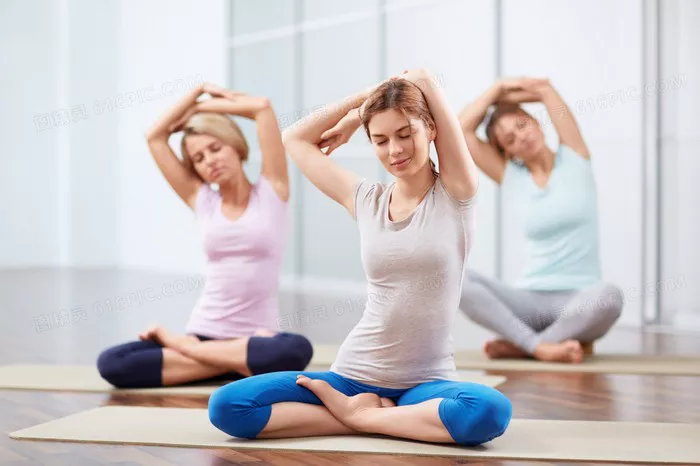Ashtanga yoga, one of the most physically demanding and structured forms of yoga, is known for its intense, dynamic flow that links breath with movement. Rooted in ancient teachings, Ashtanga involves a series of postures (asanas) performed in a specific order. With its emphasis on discipline, flexibility, strength, and stamina, Ashtanga yoga has gained popularity among individuals seeking both physical and mental benefits. However, like all forms of exercise, Ashtanga yoga is not suitable for everyone. In this article, we will explore who should refrain from practicing Ashtanga yoga and why.
Understanding Ashtanga Yoga
Before delving into the specifics of who should avoid Ashtanga yoga, it’s essential to understand what this practice entails. Ashtanga yoga was systematized by Sri K. Pattabhi Jois in the 20th century, although its roots go back much further in ancient texts. The practice consists of six series of postures, with each series becoming progressively more advanced. The primary series is designed to purify the body and mind, while the intermediate and advanced series focus on the nervous system and deeper purification.
A typical Ashtanga yoga class involves synchronizing breath with a series of vigorous postures, performed in a set sequence. The practice is characterized by dynamic movements, a high level of intensity, and a focus on strength, balance, and flexibility. Each session is meant to be done in a continuous flow, making it a highly demanding form of yoga.
Health Conditions That Make Ashtanga Yoga Inappropriate
Serious Joint Issues or Injuries
One of the fundamental requirements for practicing Ashtanga yoga is the ability to move through a series of complex postures. These postures often place significant stress on the joints, particularly the knees, hips, and shoulders. For individuals with existing joint problems such as arthritis, ligament tears, or chronic pain, the intensity of the postures could exacerbate their condition.
For example, the deep forward bends and intense hip openers in Ashtanga may put undue strain on the hips and knees, leading to potential injury or worsening of existing conditions. Those with severe joint pain or mobility restrictions may find Ashtanga’s physical demands too taxing and should consider gentler forms of yoga or alternative exercises that are less likely to strain the joints.
Heart Conditions or Cardiovascular Issues
Ashtanga yoga is a vigorous practice that involves rapid transitions between postures, which can elevate heart rate and increase circulation. Individuals with heart conditions, such as high blood pressure, arrhythmias, or a history of heart attacks, may find the intensity of Ashtanga yoga to be too stressful on the cardiovascular system.
The sustained effort required to move through the sequences can lead to overexertion, which may be dangerous for individuals with cardiovascular concerns. It is crucial for anyone with heart issues to consult with a healthcare provider before attempting any strenuous physical activity, including Ashtanga yoga. A doctor might recommend a gentler yoga practice with slower transitions and less intense exertion.
Pregnancy
Pregnancy is a significant life event that requires adjustments to one’s physical activities. While some forms of yoga can be beneficial during pregnancy, Ashtanga yoga is not recommended for expectant mothers, especially in the first and second trimesters. Ashtanga’s rigorous practice, which includes deep twists, inversions, and challenging postures, can strain the body in ways that may not be suitable during pregnancy.
The rapid movements, heat, and physical strain involved in Ashtanga could potentially increase the risk of injury or strain, and certain postures could put pressure on the abdomen or disrupt the body’s natural alignment during pregnancy. Prenatal yoga or a modified, gentle version of Hatha yoga would be better suited for pregnant individuals. It’s always advisable to consult a doctor and a prenatal yoga instructor before deciding on a practice.
Back Problems
Ashtanga yoga requires a great deal of flexibility and strength, particularly in the back and spine. Individuals with chronic back problems, such as herniated discs, scoliosis, or severe lower back pain, may find the fast-paced nature of Ashtanga challenging and potentially harmful. The deep backbends, forward folds, and balancing poses often used in Ashtanga could exacerbate back injuries or strain the spine.
For those with back issues, a more supportive and therapeutic form of yoga, such as Iyengar or restorative yoga, might be more appropriate. These styles use props, slower movements, and individualized adjustments to help alleviate pain and improve mobility without placing undue stress on the back.
Chronic Fatigue or Exhaustion
Ashtanga yoga is a physically demanding practice that can require a significant amount of energy. For individuals suffering from chronic fatigue, adrenal exhaustion, or conditions such as fibromyalgia, the intensity of Ashtanga yoga might be too overwhelming. Pushing through the strenuous postures when the body is already depleted of energy could worsen symptoms of fatigue and lead to burnout.
In such cases, it is advisable to focus on gentler practices that restore energy rather than deplete it. Practices like Yin yoga, restorative yoga, or even gentle Hatha yoga can help build strength and vitality without overburdening the body.
Psychological Factors to Consider
Stress and Anxiety
While yoga in general is a fantastic tool for managing stress and anxiety, Ashtanga yoga, with its rigorous pace and demanding physicality, may not always be the best choice for individuals experiencing high levels of stress or anxiety. The focus required in the practice can feel overwhelming for those who are already dealing with mental health challenges, especially when they are trying to calm a racing mind.
In these cases, a slower-paced yoga style with a greater emphasis on breathwork and mindfulness, such as Vinyasa or Kundalini yoga, may offer more immediate relief and emotional balance. Ashtanga may be too intense for those who are seeking an outlet to ease mental tension, as the practice can sometimes create more physical and mental strain, particularly for beginners.
Beginners or Those New to Yoga
Ashtanga yoga is not recommended for absolute beginners or those who are new to yoga. Its advanced postures, fluid transitions, and demand for strength and flexibility can be overwhelming for someone who is just starting their yoga journey. Additionally, without proper guidance and experience, attempting Ashtanga yoga too early may result in poor form, injury, and frustration.
It’s often best for beginners to start with more accessible and slower-paced forms of yoga, such as Hatha yoga or a gentle Vinyasa class. These styles provide a foundation for building strength, flexibility, and awareness that will better equip individuals for the more challenging demands of Ashtanga yoga in the future.
Lack of Time or Commitment
Ashtanga yoga requires a significant time commitment, particularly because practitioners are encouraged to practice regularly, typically six days a week. The method involves a consistent routine of physical postures, breathwork, and meditation, all of which take time and dedication to master.
For individuals with a busy lifestyle or those who are unable to commit to a regular practice, Ashtanga yoga may not be the most practical choice. Inconsistent practice can lead to frustration or even injury, as the progression of the practice depends on consistency and gradual improvement.
The Role of the Instructor
Even though Ashtanga yoga can be highly beneficial when practiced correctly, it is vital to emphasize the importance of proper instruction. If you are a beginner or have any of the health conditions mentioned above, it is crucial to practice under the guidance of an experienced and certified instructor who can make adjustments and offer modifications for your unique needs.
Inadequate instruction or improper alignment can easily lead to injury, particularly in a challenging practice like Ashtanga. If you have any health conditions, be sure to inform your instructor so they can tailor the practice to accommodate your limitations.
Alternatives to Ashtanga Yoga
If Ashtanga yoga is not suitable for you, there are many other yoga practices that can offer similar benefits in a gentler, more accessible manner. Some alternatives include:
- Vinyasa Yoga: A flowing style of yoga that emphasizes breath-synchronized movement. Vinyasa can be gentler than Ashtanga and can be modified for beginners.
- Hatha Yoga: A slower-paced practice that focuses on basic postures and alignment. It’s an excellent choice for those new to yoga or looking for a less intense practice.
- Iyengar Yoga: Known for its precision and alignment, Iyengar yoga utilizes props like blocks and straps to support practitioners in their postures, making it ideal for those with injuries or limitations.
- Restorative Yoga: A deeply relaxing practice that focuses on holding poses for extended periods with the support of props. This style is beneficial for stress relief, healing, and relaxation.
Conclusion
Ashtanga yoga is a powerful and transformative practice, but it is not for everyone. If you have any existing health conditions, are pregnant, or are new to yoga, it is important to carefully consider whether this style of yoga is right for you. Always listen to your body, and consult with a healthcare provider or experienced yoga instructor before committing to a demanding practice like Ashtanga yoga.
Remember, there is no one-size-fits-all approach to yoga, and there are many other forms that may be more suited to your personal needs and goals. Whether you’re looking for stress relief, increased flexibility, or improved physical strength, there is a yoga practice that can help you achieve those goals while maintaining a balanced approach to your body and mind.
Related Topics
















